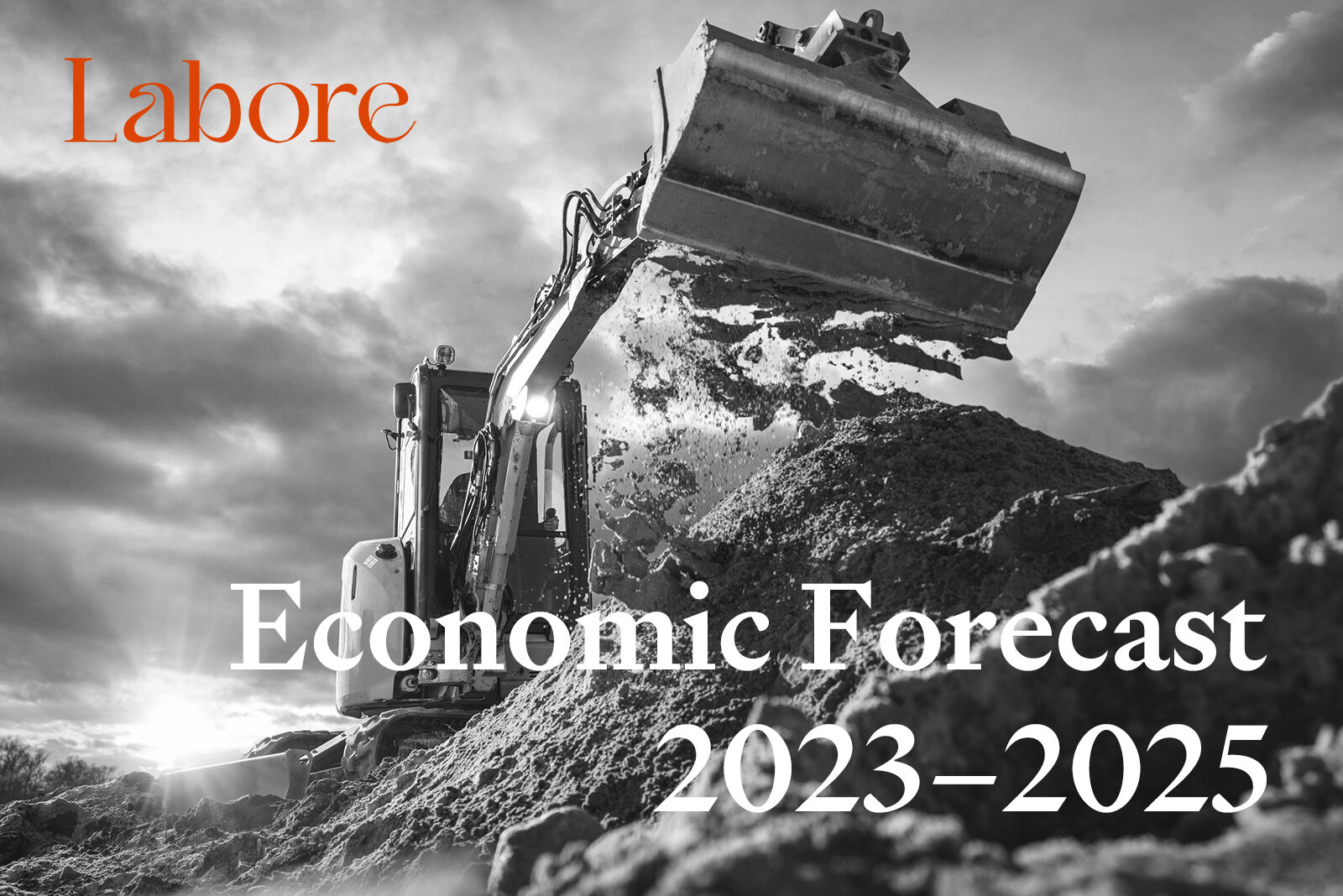A Minor Recession Ahead – an Appropriate Fiscal Stance Does Not Imply Appropriate Budget Cuts
Economic Forecast 2023–2025

- Finnish economy is heading towards a minor recession
- Return to growth path begins next year
- Exports growth remains moderate
- High interest rates reduce consumption and investment
- Budget cuts will reduce the government budget deficit to a small extent only
Finland is heading towards a minor recession from which it will probably recover next year. We forecast GDP growth to be -0.3 per cent this year, 0.8 per cent next year, and 1.7 per cent in 2025. These estimates have not changed dramatically after the Labore spring forecast, but now the forecast has been updated to be somewhat more pessimistic; according to our forecast from last spring, these numbers were -0.2 per cent, 1.0 percent, and 2.7 per cent, respectively.
Economy returns to growth path next year
Economic growth slows down this year also globally but, except for Germany, growth is unlikely to cease to be positive in Finland’s most important export destinations, and it will increase again next year. The current combination of fast inflation and slow growth causes difficulties for central banks. In our assessment the interest rates of the European Central Bank have now approximately reached their maximum values, but they will decrease slowly. High interest rates are going to restrict both investments and private consumption.
This year labour productivity growth will be almost negligible (+0.1 per cent), but labour productivity will start to increase next year as a new boom period begins. Despite of the government’s labour market policies, the employment rate is according to our assessment not going to increase from its current, relatively high level. On the other hand, the temporary recession is unlikely to show as a large increase in the unemployment rate, among other reasons because of labour hoarding (i.e., because employers are often unwilling to part with their employees if the period of decreased labour demand is sufficiently short).
Accordingly, in our forecast GDP growth will be close to labour productivity growth. The growth of wage and salary earnings will this year remain smaller than the inflation rate. The increased labour productivity and the relatively high employment rate will speed up the growth of wages and salaries, and the purchasing power of employees starts to increase again next year.
In this year the growth of exports has until now been modest, and the primary cause for the weak growth is the lack of increase in export demand. In our assessment export returns during the forecast period to moderate growth due to the improving economic situation abroad.
The current fast inflation and high interest rates make it exceptionally difficult to forecast private consumption. This year private consumption will according to our forecast decrease slightly, but it begins to grow next year, as purchasing power increases and interest rates start to decrease.
This year investments will be reduced, mostly due to building investments whose volume has collapsed because of high interest rates. On the other hand, R&D investment is going to increase, and also public investment will grow, among other reasons because of expensive military aircraft acquisitions and infrastructure projects. Investments will increase also on the aggregate level in 2024 and 2025.
Public deficit remains large
In our forecast public consumption will start to decrease during the forecast period, but the public deficit will nevertheless remain large. This year the deficit is increased also by the wellbeing services county administration, which has started to operate in the beginning of the year.
The current Finnish government has planned considerable policy measures whose aim is to reduce the deficit, but they are one-sidedly focussed on the reduction of government expenditure without increases in government revenue. In the public debate on the extent to which the government’s fiscal policy is appropriate for the current situation, it has not always been made sufficiently clear whether one is evaluating the reasonability of budget cuts proposed by the government or the fiscal stance (difference of revenue and expenditure) proposed by the government.
Recording of the announcement event (in Finnish)

- Ilkka Kiema
- Research Leader
- Tel. +358-40 940 2287
- ilkka.kiema@labore.fi
- Profile